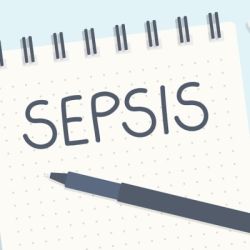Early recognition and initiation of antibiotics are crucial in managing sepsis. Various warning scores, including qSOFA (quick Sequential Organ Failure Assessment), have been introduced to aid early detection. Patients with suspected infection and at least two of the qSOFA clinical signs are at a significantly higher risk of death after 28 days. However, managing patients with only one qSOFA point remains uncertain.
Previous research has shown that elevated levels of the biomarker suPAR (soluble urokinase plasminogen activator receptor) are independently associated with death within the first 28 days in infected patients. Given this, in this study, researchers hypothesised that suPAR could enhance the early detection of sepsis in patients with one qSOFA sign.
Although current guidelines from the Surviving Sepsis Campaign do not recommend qSOFA for early sepsis detection, analysis from the Hellenic Sepsis Study Group suggests a significant risk of death among patients with one qSOFA sign at admission. This led to an investigational approach involving two parts. Firstly, a retrospective analysis of a large-scale prospective study was conducted to assess the risk of death among patients with one qSOFA sign and elevated suPAR levels. Secondly, a randomised controlled SUPERIOR (SUPar-guided double-blind randomized controlled trial of Initiation Of antibiotics foR presumed infection at the emergency department) trial was designed and conducted to investigate whether early antibiotic treatment for patients with one qSOFA sign and increased suPAR levels could impact patient outcomes.
Patients admitted to the ED with suspected infection, qSOFA score of 1, and suPAR levels ≥ 12 ng/mL were randomly assigned to receive a single infusion of either placebo or meropenem. The primary endpoint was early deterioration, defined as a minimum one-point increase in the SOFA score within the first 24 hours.
The study found that most of the mortality risk was observed in patients with qSOFA scores of 2 and 3. Compared to patients with qSOFA = 1 and suPAR < 12 ng/mL as a reference, those with qSOFA = 1 and suPAR ≥ 12 ng/mL had a hazard ratio (HR) for 28-day mortality of 2.98.
The trial was prematurely terminated due to pandemic-related ED re-allocations after enrolling 91 patients: 47 in the placebo group and 44 in the meropenem group. The primary endpoint was achieved in 40.4% and 15.9% of patients, respectively, indicating a difference of 24.5% and an odds ratio of 0.14. A post hoc analysis revealed significant median changes in SOFA score after 72 and 96 hours, with values of 0 and -1, respectively.
These findings suggest that combining a qSOFA score of 1 with the biomarker suPAR enhances its ability to predict unfavourable outcomes, suggesting its potential to aid in decision-making for earlier treatment interventions.
Source: Critical Care
Image Credit: iStock


















